Wild Ones Gathering Highlights
Home of Ken & Pat Borgwald
Saturday April 16 (56 attendees)
Wednesday April 27 (65 attendees)
Editor’s note: Thank you to member Donna Short who has agreed to write our gathering highlights!
Chapter members are invited to our monthly gatherings
Not a member yet? Join us!
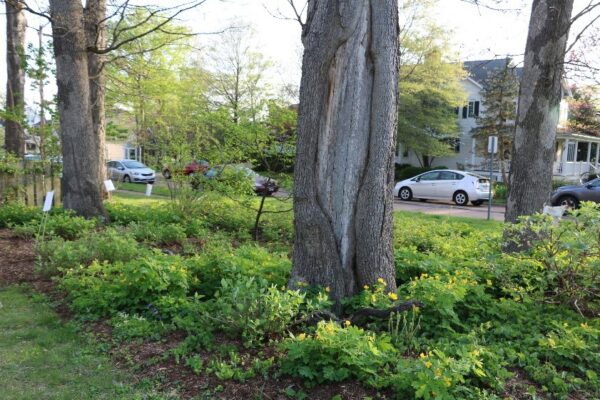
Photo by Donna Short
It was a perfect Spring evening! This gathering had been postponed due to rain – but in the two week interim many of the spring plants bloomed. Pat and Ken began to introduce native plants in 2016 when they contracted with James Faupel to design and develop a native plant bed in their front lawn. Prior to this point Pat said the area was a hopeless dust bowl by the end of the summer! Instead, we saw a delightful display of woodland plants, including celandine poppy, Virginia bluebells and Jacob’s Ladder in bloom. Twenty-nine species are included in this area.
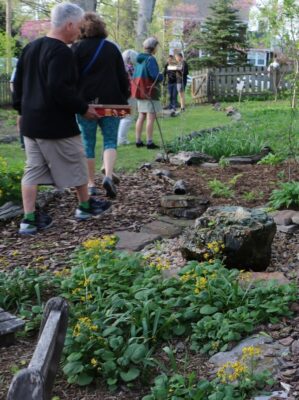
Photo by Donna Short
The overall plan was to “never leave a tree in the lawn”. This resulted in 7 developed areas surrounding trees and a variety of practical adaptations. They used grass to provide a walkway that flows through the yard and mulched the fence line for Charlie (dog) to pace. Naturally, this has been a laborious process of removing the existing foliage including invasive honeysuckle and star of bethlehem.
Grass and mulch pathways bend and flow through the yard with a water feature to the right of the path (right).
Coral Honeysuckle was blooming on the fenced entry to the yard (left) and an inviting sitting area (right).
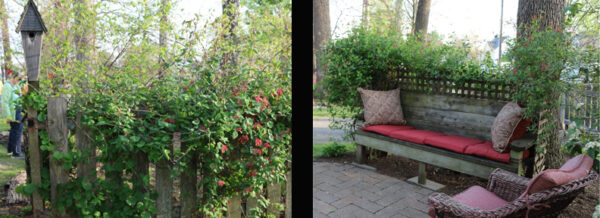
Photo by Donna Short
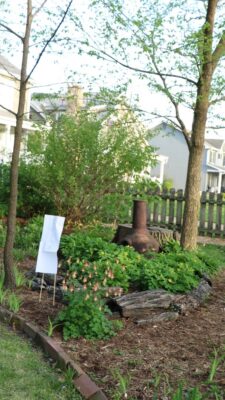
Photo by Donna Short
Columbine was in full bloom (right).
This was a great example of a woodland setting with 23 white oak trees and various understory trees and 85 plant species. Plants Included Butterfly Weed, Cedar Sedge Common Milkweed, Curly Top Iron Weed, Dwarf Crested Iris, Missouri Primrose, Purple Coneflower, Purple Milkweed, Wild Hydrangea, Yarrow and many more!
In addition, Mary Spires provided information on jumping worms which are a concern when sharing plants. She pointed out that they are gray in color and if you look closely they stick out their tongue!
From the USDA invasive species website:
These earthworms are wriggling their way across the United States, voraciously devouring protective forest leaf litter and leaving behind bare, denuded soil. They displace other earthworms, centipedes, salamanders and ground-nesting birds, and disrupt forest food chains. They can invade more than five hectares in a single year, changing soil chemistry and microbial communities as they go, new research shows. And they don’t even need mates to reproduce…
These invaders have been located in Missouri, and can be spread inadvertently by sharing plant materials that may include worms or their egg cases.
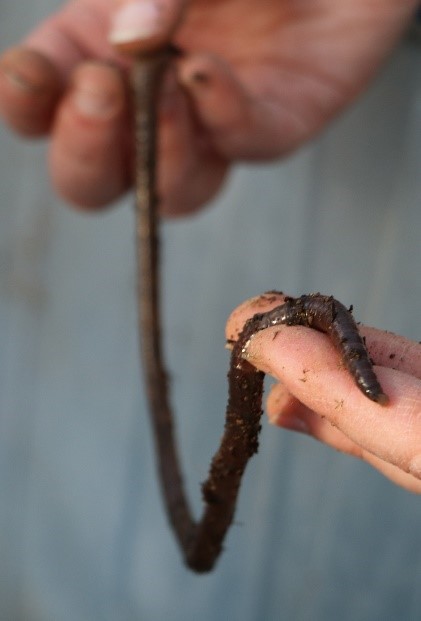
Photo by Donna Short
Here is a link to what MDC says about these worms, and a video about them.
The Wild Ones St. Louis Chapter board has decided to refine our very recent policy about plant sharing at our Garden Gatherings. After further research and many conversations with knowledgeable members and local experts during the Partners for Native Landscaping Native Plant Fair on Sunday (4/10), we concluded: It is safe to share plants dug from gardens with the following precautions:
- Rinse the roots of the plant before planting. Gently massage roots in a basin of water to remove soil clumps, until no soil remains affixed.
- Afterwards, strain the water and place any solids larger than a poppy seed in a trash bag in the sun. This will destroy, through solarization, any jumping worm cocoons.
Precautions are not necessary if the shared plants are from seed grown in potting mix or are bare root.
Link: Jumping Worms | Missouri Department of Conservation (mo.gov)

